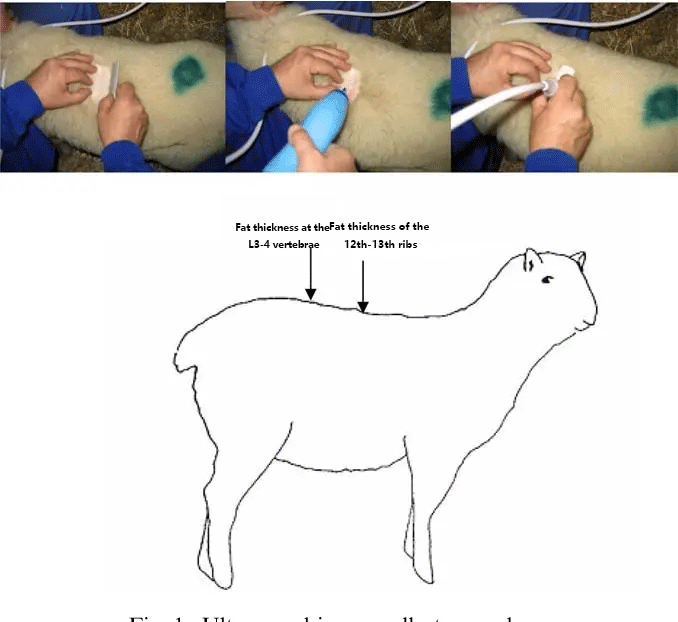The use of veterinary ultrasound machines to measure backfat thickness and eye muscle area in sheep grading has been in practice for a long time. When measuring sheep, measurements are typically taken at the 12th to 13th ribs, though some also measure at the third to fourth lumbar vertebrae.
Is using a veterinary ultrasound machine to measure eye muscle area parameters more effective?
At first glance, tracking any area on a veterinary ultrasound machine is more prone to error than simple linear measurements. The reasons include ultrasound physics (muscle depth measurements fully utilize the machine’s excellent axial resolution, while any area tracking must rely on the system’s lateral resolution) and operator variability both within and between operators. However, in some studies, muscle area performance has been superior to muscle depth. The primary reason is that meat grading relies heavily on comparing one animal to another, but in sheep, variability between animals is relatively small, or at least so small that measurement techniques must be flawless to ensure that any observed differences truly stem from animal-to-animal variability rather than operator-to-operator variability.
– Probe pressure: Pressure from the probe causes fat to deform uniformly, but muscle does not due to the ribs below. However, based on my experience, teaching technicians to use the correct probe pressure is not difficult, and ribs are not an issue.
– Third layer of fat: It is assumed that the third layer of fat may often be mistaken for the beginning of the muscle layer, leading to its inclusion in muscle depth measurements. This layer certainly causes confusion, but I have found that this third layer of fat (often found in fatter sheep and absent in leaner sheep) does not align with the deepest muscle regions, as determined by consistently measuring muscle depths.
– Frequency: Compared to pigs and cattle, sheep and lambs have smaller muscle depths. Specialized low-frequency linear probes are designed for beef work, but higher frequencies should be used for sheep scanning to improve resolution and measurement accuracy. I agree and add that a thorough understanding of basic ultrasound physics and equipment controls is essential, including the role of the focal area; misunderstanding the focal area can actually impair image quality.
The above points are certainly key considerations for any organization embarking on a new meat grading program, but they do not explain the poorer performance of lean muscle depth and area in predicting lamb quality; for experienced technicians working according to well-validated protocols, these points should not pose a challenge.
Post time: Jul-01-2025




